Collecting seeds – how to collect and store seeds from your garden plants
Collecting seeds from your own garden to sow next season is the most economical way to increase the flowers and plants in your beds and borders


Your thoughts can turn to collecting seeds to store and sow next season once flower blooms and plants fade, leaving seed heads in their place.
Augmenting your garden’s blooms and plants from its own bounty is one of the most economical ways to increase your plant stock as part of your flower bed ideas.
By late summer into fall, many seed heads will be ready to gather, and growing plants from seeds collected from your own garden is one of the most rewarding aspects of gardening, as well as a sustainable garden idea.
Along with flowers, you can try collecting seeds and berries from trees, shrubs, vegetables and herbs at different times of the year.
Seed swapping with friends and neighbors is a lovely way to share plants and flowers and fill your gardens with color.
Collecting seeds – different varieties
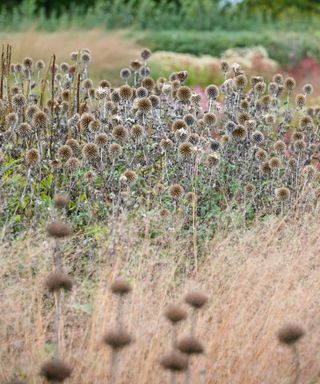
‘Propagating plants from seeds is both economical and satisfying to see the young plants you’ve created and nurtured grow and add to your garden stock,’ explains garden writer Leigh Clapp, and is an essential skill to learn for planting a flower bed.
Much like plants and flowers, seeds come in all shapes and sizes – as pods, cones, berries, catkins, capsules, nuts, winged seed or exploding seed heads – and need careful handling and sorting.
If you are harvesting sunflower seeds, harvesting tomato seeds or collecting zinnia seeds, for instance, the seeds are quite large and easy to count, and sort individually, whereas poppy seeds are much smaller and come from a pod.
'You will have to be vigilant – seeds pods or heads may not look ready, but you can be sure that as soon as your back is turned, the seeds will pop out and spread themselves over the border,' explains Ian Spence, author of RHS Gardening Through The Year.
By collecting seeds you can populate new areas of your garden with specific flowers that you love, and is an excellent way to start planning a cut flower garden.
Along with collecting seeds, you can also allow many annuals and biennials to self-sow by nature’s hand. Honesty, foxgloves and cornflowers are just some of the enduringly popular garden flowers that will generously self-seed around your garden borders for a naturalistic planting design.
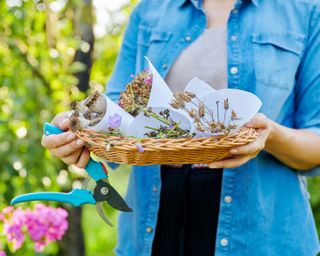
When is the best time for collecting seeds?
The best time for collecting seeds will differ depending on the hardiness zone where you live, but also the specific flower or plant that you are planning on collecting seeds from.
Seeds are usually ripe about two months after the plants have flowered, which will therefore differ depending on the flowering time of the specific plant. You will be busy collecting seeds from a lot of annuals, biennials and perennials in late summer and fall.
Leave some seed heads behind as food for birds as part of your wildlife garden ideas. You will also be helping wildlife by collecting seeds because many plants that are easy to propagate from seed, such as foxgloves, sunflowers and aquilegia, are great plants for pollinators – so growing more will bring benefits to all.
'If there are plants you particularly want seed from, then watch them carefully,' explains Ian.
There are also some seeds that can be collected during the growing season when they are still green, such as calendula.
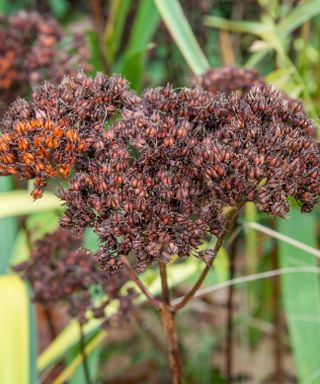
How do you collect good seeds?
You should only try collecting seeds from healthy plants, as this will ensure that the seeds produced are also of good quality.
‘As the flowers wither away, the seeds begins to form where the center of the flower was. They will gradually dry out – you must leave them until they are completely dry and crispy,’ explains Lindsay Pangborn, gardening expert at Bloomscape.
If you want to reproduce specific plants, such as a specific cosmos, then collect seeds from species plants instead of from hybrids. Hybrids, such as F1 varieties – which are the result of cross pollinating two different plants – may not 'come true' from seed. In other words, the seedlings may differ from the parent plant. If you are quite relaxed about the results, of course, then collect seeds from any flowers you like, so long as they are vigorous.
Many of the enduringly popular cottage garden plants are easy to collect seeds from and there will also be late summer flowers from which you can harvest the seeds later in fall.
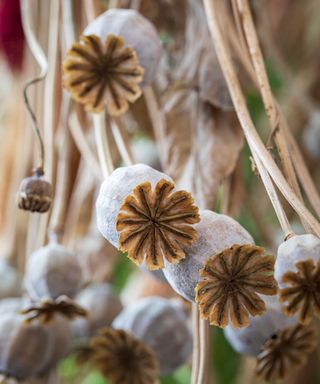
How do you know the seeds are ready to collect?
'Seed heads are usually ripe and ready to collect when they begin to turn brown,' says Ian.
Check if the seed heads have changed from green to brown and split open easily. Tap a flower head gently with your hand and if seed falls readily, it is time for collecting seeds. You can also shake seed heads and see if they rattle.
How do you collect and store seeds?
To collect and store seeds, follow these step-by-steps.
Collecting seeds:
- 'Harvest the seeds on a dry and sunny day, before they are shed,' says Ian.
- Have a paper bag to hand to collect the seed heads into.
- Place them on a warm windowsill or greenhouse bench on a sheet of paper to dry, which makes it easier to extract the seeds.
- ‘If the pods or capsules don’t open when dry, release the seeds by gently crushing them. You can place a bag over exploding seed heads and gently shake them out,’ says Leigh.
- Separate the seeds from the chaff – the covering and debris that comes off with the seeds. 'This is well worth doing to get clean seeds. Any debris left in with the seeds may cause them to rot, so an old flour sieve can be useful,' advises Ian.
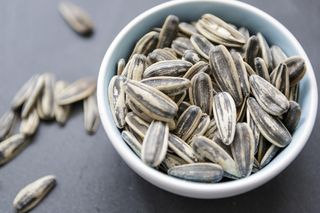
Storing seeds:
- Store the seeds in labelled paper or foil envelopes – not plastic.
- If the seeds are small, use a funnel to put them in the envelopes.
- Don’t forget to label each packet with the name of the plant and the date harvested
- Store the packets in a cool, dry place. An airtight container in the bottom of the fridge is ideal,' says Ian.
How long do seeds need to be dry before planting?
Some seeds can be dried and stored until the following spring, or for a couple of years before they are planted, such as zinnias. Others are best sown immediately as they germinate best if they are fresh. These include cyclamen, hellebores, aconites and delphiniums, explains Ian.
Raise your seeds in seedling trays, or directly in the garden. Keep them moist, as seeds need to absorb 40-60 per cent of their weight in water to start germination, and plant out when their leaves develop into prepared soil.
Seedlings can be raised under glass or inside on windowsills and then hardened off before planting out.
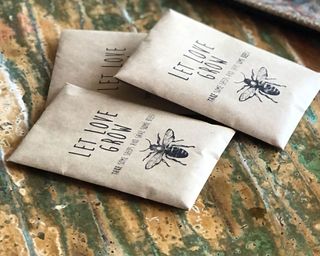
Which are the flowers to collect seeds from?
There are many perennials, annuals and biennials that you can collect seeds from – choose those that you want to plant more of, or seed swap with friends and neighbors.
Some of the easiest flowers to try collecting seeds from include alliums, nigella, poppies, cosmos, calendula, zinnias, cleome, sunflowers, honesty and foxgloves, but the list is endless. Ultimately it depends on what you want to grow as part of your garden ideas.
Sign up to the Homes & Gardens newsletter
Design expertise in your inbox – from inspiring decorating ideas and beautiful celebrity homes to practical gardening advice and shopping round-ups.
Rachel is senior content editor, and writes gardening content for homesandgardens.com, Homes & Gardens magazine, and its sister titles Period Living Magazine and Country Homes & Interiors. She has written for lifestyle magazines for many years, with a particular focus on gardening, historic houses and arts and crafts, but started out her journalism career in BBC radio, where she enjoyed reporting on and writing programme scripts for all manner of stories. Rachel then moved into regional lifestyle magazines, where the topics she wrote about, and people she interviewed, were as varied and eclectic as they were on radio. Always harboring a passion for homes and gardens, she jumped at the opportunity to work on The English Home and The English Garden magazines for a number of years, before joining the Period Living team.
-
 This interior designer just showed 3 creative storage ideas that I had never thought of before – from an editor who thought they'd seen it all
This interior designer just showed 3 creative storage ideas that I had never thought of before – from an editor who thought they'd seen it allInterior designer Alice Grace shares her creative, custom, and completely game-changing storage tricks that she's used in her new-build home
By Charlotte Olby Published
-
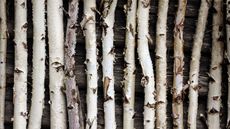 10 best trees with unusual bark for year-round interest – don't let bright blossoms and colorful foliage take all the glory in your yard
10 best trees with unusual bark for year-round interest – don't let bright blossoms and colorful foliage take all the glory in your yardPick a variety with an uniquely patterned or peeling bark for visual interest even in winter
By Alison Jones Published
